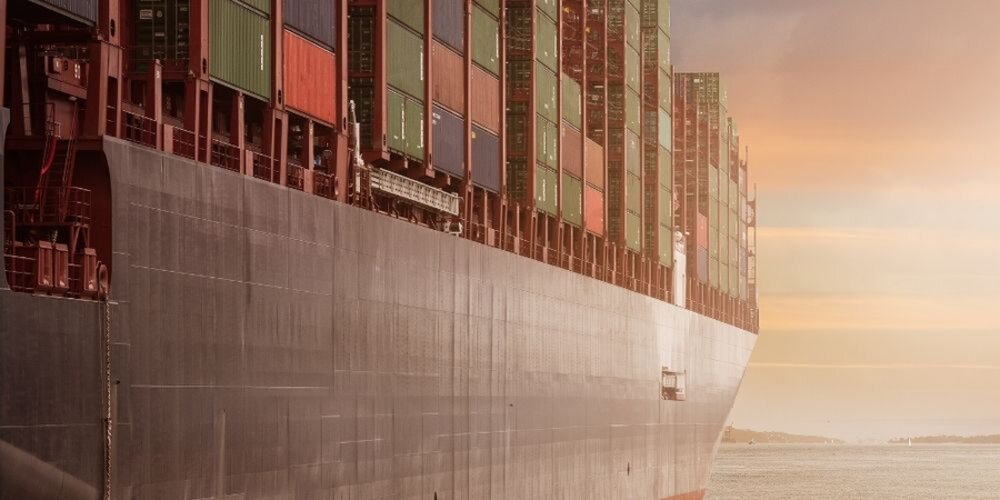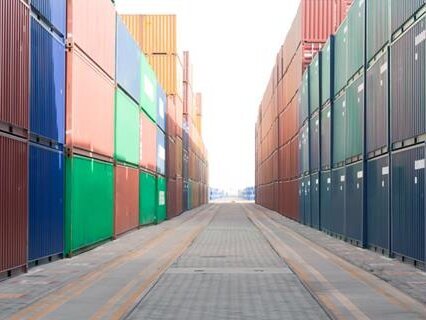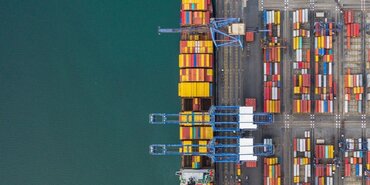TT Talk: Safer grounding - how to manage NAABSA berth risks

NAABSA (not always afloat but safely aground) berths are those where ships sit on the riverbed or seabed at low tide rather than staying afloat. The practice is common in ports with high tidal ranges, but there is a real risk to ships if the bed of the berth pocket is in any way obstructed or uneven.
To avoid major liability claims for hull damage and subsequent disruption to port operations, port authorities need to ensure their NAABSA berths are regularly surveyed, dredged and levelled. In addition, all dropped cargo incidents need to be investigated and resolved without delay.
Advantages of NAABSA berths
NAABSA berths are typically used in areas of high tidal fluctuation, with the tide frequency and range being unique to the geographical area. As such the management of each NAABSA berth tends to be unique to the port.
NAABSA berths are particularly valuable in ports with limited dredging capacity or where maintaining deepwater berths is impractical. They enable continued access for cargo operations, reduce port infrastructure costs and support flexible scheduling.
Nevertheless, for the port’s asset managers and harbour masters, they require careful assessment of seabed conditions, ship suitability and operational procedures to ensure safety and compliance.
Grounding risks
The most immediate risk of NAABSA berths is physical damage to a ship’s hull when it grounds on the seabed or riverbed. Bed conditions can vary due to sedimentation, debris or changes following storms or dredging. If the bed is not uniformly soft or contains hidden obstructions, the ship may suffer structural damage.
Sediment movement can also alter the shape and depth of the berth pocket. This increases the risk of uneven grounding or unexpected contact points, which may compromise ship stability or cause damage.
In breakbulk operations, cargo dropped into the berth area can become a submerged hazard. These obstructions may not be visible during subsequent berthing, posing a serious threat to hull integrity.
Inadequate or outdated hydrographic surveys can lead to poor decision making around the suitability of NAABSA berths. Without high-resolution, up-to-date data, operators may not detect changes in bed profile or emerging risks.
NAABSA clauses in charter parties need to be carefully worded to allocate liability. If a ship is damaged while aground, disputes may arise over whether the grounding was customary, safe or properly indemnified. The absence of clear documentation or written confirmation from charterers can expose shipowners and port authorities to significant financial risk.
Finally grounding incidents, even when intentional, can lead to environmental scrutiny or operational delays, especially if the ship cannot refloat as scheduled due to unexpected bed conditions or mechanical failure.
Accurate surveys
The underwater surveying of the berth pocket is a vital part of the management of any berth, but the frequency and detail of surveys are even more critical for the management of NAABSA berths. For a port authority or terminal operator to declare a berth safe to use, they must have confidence that the condition of the berth pocket will not cause damage to the ship being berthed.
Not all bathymetric survey techniques provide the same level of detail. It is therefore important when choosing survey equipment for in-house surveys or when drawing up specifications for survey contractors that the survey data will give the level of detail needed to determine the berth is safe to use.
The required frequency of surveys is not a fixed duration. It should be considered for each berth based on the known bed sedimentation rate, the bed sediment behaviour during and after storm or flood conditions, and the type of cargo being handled – for example, breakbulk cargoes may pose a bigger risk if dropped into the water.
Ensuring survey data is up to date and with adequate resolution to make berth maintenance decisions is key to safe management of NAABSA berths. This data and the developed knowledge of the bed behaviour in changing sea and flow states provides the vital decision-making tools for maintenance dredging activities.
Dredging and levelling
As with surveys, the frequency of NAABSA berth maintenance cannot be fixed. Scheduling and planning of dredging and levelling work must be based on bed sedimentation characteristics and high-resolution survey data.
Using this knowledge and information, port operators can develop an appropriate berth-by-berth maintenance strategy.
Incident management
A significant risk when managing NAABSA berths is the potential for hull damage from dropped cargo in the berth pocket. It is therefore vital that a robust incident management plan is developed for each berth.
As soon as a dropped cargo is suspected or confirmed, the incident should be reported and the berth closed. The initial report should include the cargo’s location in the berth pocket and its type, as certain cargo types present a higher risk of structural damage.
A bathymetric survey should then be undertaken urgently to assess obstructions and changes in the bed profile. The survey data together with photographs, video and witness statements should be included in the incident report to facilitate insurance or liability assessments.
Finally, the port authority should undertake any necessary dredging and removal of obstructions before confirming the berth is safe to use. The incident report should be logged in the berth maintenance and risk register for future reference and trend analysis
Conclusion
NAABSA berths are a cost-effective solution for ports in areas with high tidal ranges or limited dredging capacity, but each berth needs to be carefully monitored and maintained to ensure it is safe for ships to ground. In particular, there must be a robust system for reporting and managing dropped cargo incidents.
Documents
TT_Talk_-_Edition_326__Chinese_.pdf (681 kB) 08/10/2025
- Author
- Harry Palmer
- Date
- 04/09/2025





